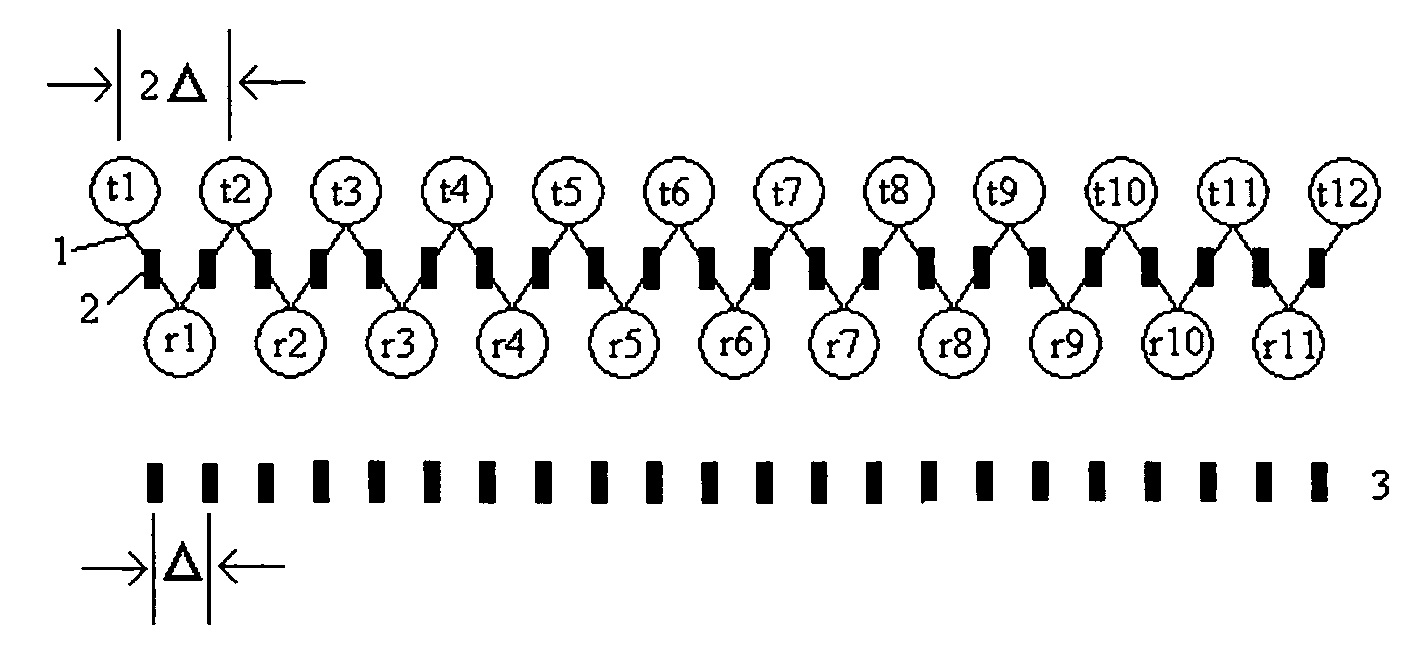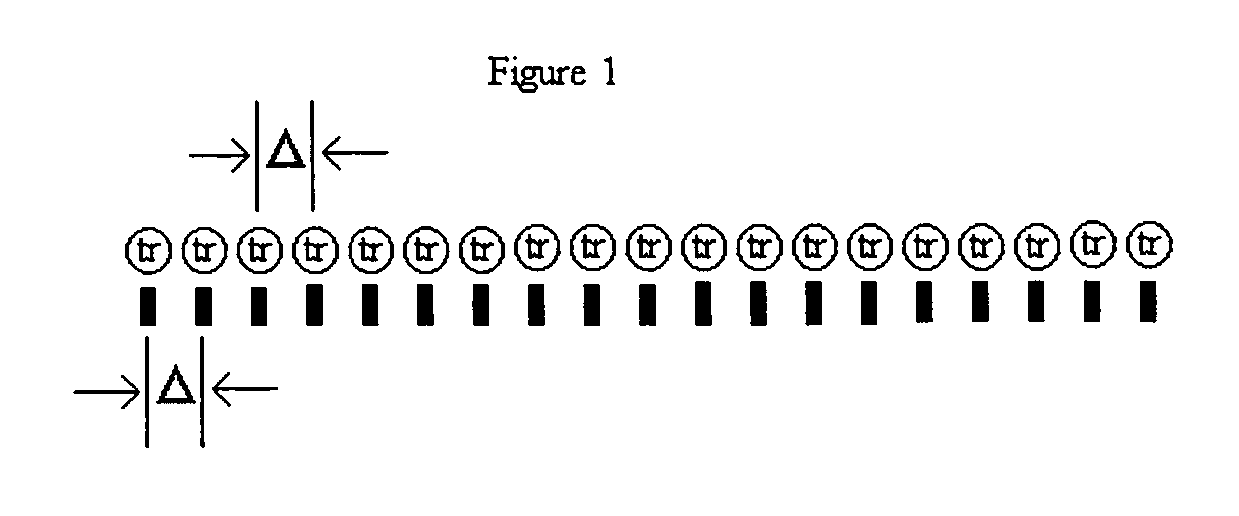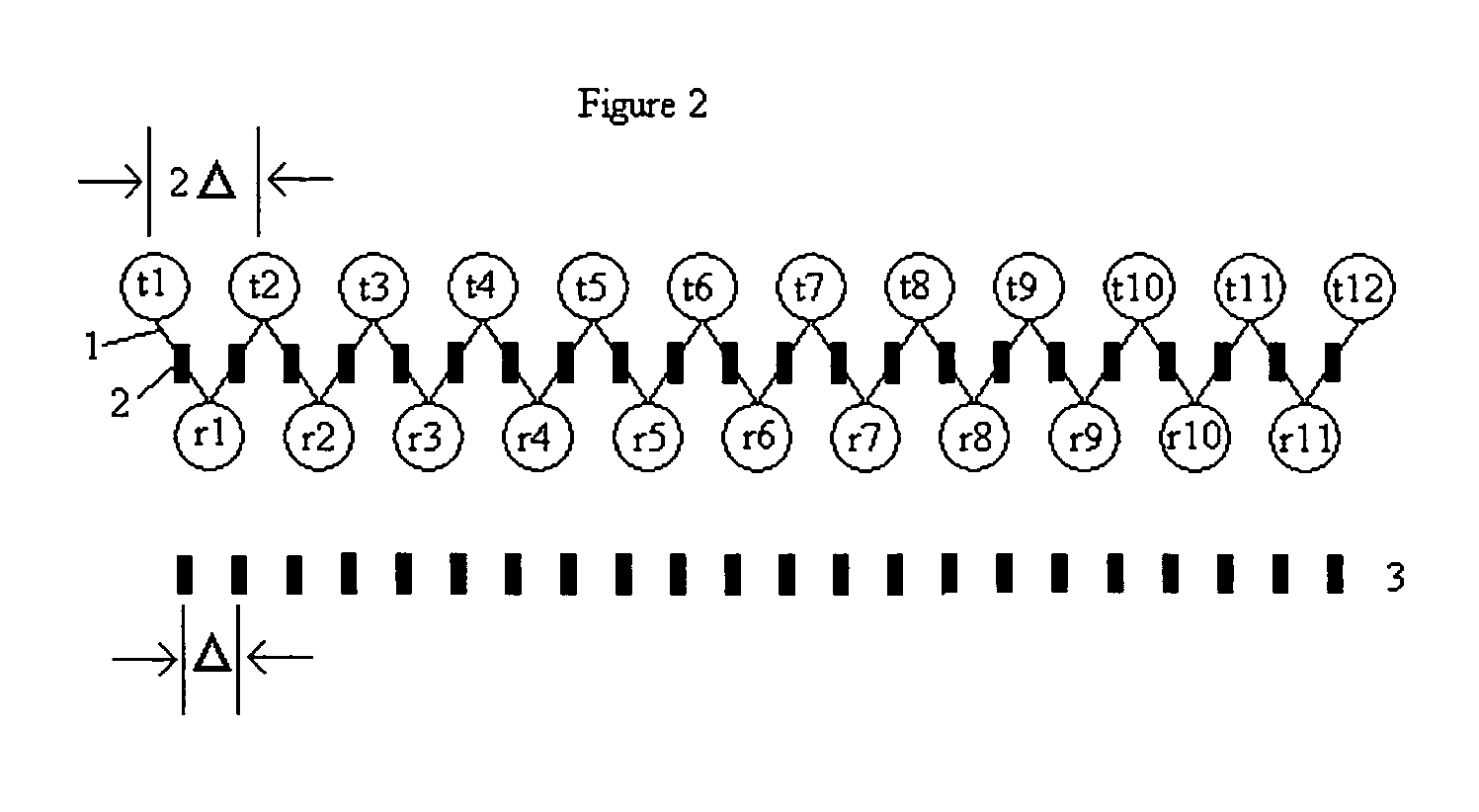Interlaced linear array sampling technique for electromagnetic wave imaging
a linear array and electromagnetic wave technology, applied in the field of microwave and millimeter wave holographic imaging techniques, can solve the problems of large cost of these systems, antenna coupling problems, and the ability of microwave/millimeter-wave transceivers, so as to reduce the cost, reduce the cost, and reduce the effect of performance penalty
- Summary
- Abstract
- Description
- Claims
- Application Information
AI Technical Summary
Benefits of technology
Problems solved by technology
Method used
Image
Examples
Embodiment Construction
[0031]For the purposes of promoting an understanding of the principles of the invention, FIGS. 2 through 5 show various configurations of sampling systems utilizing linear arrays. As will be recognized by those having ordinary skill in the art, the figures show what would typically only be a portion of the arrays used in actual systems, as in many applications the size of the object imaged by these systems necessitates much longer arrays. Accordingly, the examples shown in FIGS. 2 through 5 are only intended to be illustrative of the general principles with respect to how various elements within the arrays may be used to achieve the advantages of the present invention, and the invention should in no way be limited to either the number of elements shown in these illustrative examples, or the arrangement of these elements within these illustrative examples.
[0032]For example, and not meant to be limiting, those having ordinary skill in the art and the benefit of this disclosure will re...
PUM
 Login to View More
Login to View More Abstract
Description
Claims
Application Information
 Login to View More
Login to View More - R&D
- Intellectual Property
- Life Sciences
- Materials
- Tech Scout
- Unparalleled Data Quality
- Higher Quality Content
- 60% Fewer Hallucinations
Browse by: Latest US Patents, China's latest patents, Technical Efficacy Thesaurus, Application Domain, Technology Topic, Popular Technical Reports.
© 2025 PatSnap. All rights reserved.Legal|Privacy policy|Modern Slavery Act Transparency Statement|Sitemap|About US| Contact US: help@patsnap.com



